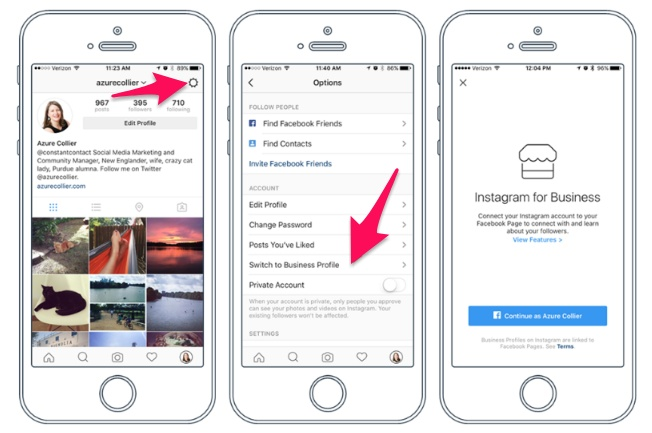
RSS (or straightforward syndication) is an excellent way keep current with new content on a website. It can also be used to automate email newsletters. Here are some ideas to get you started. You can customize your feeds by adjusting your settings to your preferences. If you want your subscribers to be more comfortable signing up, create an RSS-powered newsletter.
RSS stands for "straightforward syndication"
If you're looking for a way to syndicate your content, you've probably come across RSS. RSS stands for rich site summary. These are simple text files that contain information about your website. These text files can then be plugged into a feed reader which transforms them into a stream for your subscribers. RSS is highly customizable. You can make changes to your subscription preferences anytime, with just one click.
RSS can be subscribed through a news site aggregator. It pulls data from multiple websites and displays it all in one machine-readable feed. This format allows you to track multiple websites through one news aggregator. It also checks for new information regularly. This will save you time and effort by automatically downloading new content. Enter the RSS feed URL and click "Subscribe".
RSS feeds are an excellent way to keep track of new content on a website.

RSS feeds can be a valuable tool for both marketers and salespeople. To increase sales and convert more customers, you must stay updated. RSS feeds are different. Let's take a look at some of the benefits. For one thing, they can be read on the go. RSS feeds are great for vacation reading. These feeds can also be used for pushing content to social media.
The website creates the RSS feed and then delivers it to a feedreader. Most current-generation Web browsers display an orange square icon when there is a feed. An RSS feed can be subscribed to and you can view new content from many websites. The content is presented in chronological order. Subscribing will notify you whenever new content is posted to the website.
You can personalize your RSS feeds
You can specify some basic settings for your RSS feed using the RSS feed builder. You can add or remove specific spaces, track comments and select how many feeds you want to display. Once you've made your selections, you are able to customize your WordPress feed. A single license costs approximately $80. Feedzy comes with features like caching, WordAi integration, and Gutenberg compatibility. Unfortunately, Feedzy does not offer a free version.
To customize your RSS feed, the first step is to decide which field you want to display. If the field is empty, enter the name of your feed. Next, choose the post title and link from the list. If your message exceeds 10KB in size, you can opt to automatically truncate it. Complete any additional fields as necessary. Google Chrome lets you inspect your website's source code by selecting the "Inspect Link” option.
RSS feeds can be used to automate your email newsletter

An email newsletter is one of the most effective marketing tools available today, but in order to be effective, it needs to be delivered consistently and offer value to its subscribers. It is difficult to create a newsletter and you need to make sure your subscribers are happy. RSS to Email tools can be used to automate the curation process and create your email newsletter. Create a schedule and create your campaign.
RSS to email service allows you to automatically send emails based only on articles from an RSS feed. These services let you create a customized template for your newsletter and automatically send it to your list every time you post new content. These services let you set the frequency at what you want to send your emails. You can combine RSS feeds to make one newsletter. This can be beneficial if you regularly post new content on your blog.
FAQ
What are some of the best tools to do on-page search engine optimization?
Video embeds and image alt tags are great tools for on-page optimization. You can read more about these types issues in this article.
What Is On-Page SEO?
On-page optimization refers to actions taken within your website in order to improve its ranking in search engines. On-page optimization includes site architecture, page titles and meta tags. Image alt text is also included. Off-page SEO refers to activities outside your website that will improve its ranking. These include backlinks.
What are the Common Mistakes When Using SEO?
The most common mistake people make when using SEO is not taking the time to do it right. SEO is not a quick process. To achieve success, you'll need to put in the work required to ensure that your website is optimized properly. Another common mistake is trying to trick search engines using black hat techniques. Black hat techniques can harm your rankings rather than help them.
How do I create an SEO Strategy?
The first step in creating an effective SEO strategy is understanding what you want to achieve and how you will go about achieving this goal. This allows you organize your content around those goals.
Next, you need to begin working on keywords. By doing keyword research, you'll gain insight into what people are searching for when they use certain words. You can then create articles on these topics by using this information.
Your target keywords should be included in your articles once you have finished writing them. You should optimize every article by including images and videos. If possible, you should also link to other related sites.
Once you're done writing the content for your website, it's now time to optimize it!
Why would I need a SEO strategy?
SEO strategies will help you to maximize your potential for growth. When ranking higher in search results, there's no point in having great content if nobody ever finds it!
A good SEO strategy helps you build relationships with influencers and experts within your industry. With their knowledge and connections, you can learn new tricks and techniques to get ahead of your competitors.
How long does SEO take you to build traffic?
Traffic generation through SEO usually takes 3-4 months. It all depends on several variables.
-
High quality content on your site
-
Backlinks
-
Targeted keywords
-
Competitor rankings etc.
If you're new to SEO and want to generate some quick results, try using SEMrush for a free trial. The powerful platform allows you to track all aspects of your SEO campaign including competitor research, backlink profile and top pages. You can also view local listings, organic traffic stats and reports.
How Long does it take for PPC Advertising results to show up?
Paid search results are more time-consuming than organic search results. This is because there is no natural flow. Searchers expect to see relevant results at the top when they are searching for something. Paid search results will need to convince more people to pay money for advertising on their website.
Statistics
- If two people in 10 clicks go to your site as a result, that is a 20% CTR. (semrush.com)
- And 90%+ of these backlinks cite a specific stat from my post: (backlinko.com)
- Which led to a 70.43% boost in search engine traffic compared to the old version of the post: (backlinko.com)
- 64% of marketers actively create SEO campaigns because they help hit multiple key performance indicators (KPIs), including increasing traffic, helping your site rank for relevant keywords, improving your conversion rate, and much more. (semrush.com)
- Sean isn't alone… Blogger James Pearson recently axed hundreds of blog posts from his site… and his organic traffic increased by 30%: (backlinko.com)
External Links
How To
How do I know if I am doing good SEO?
There are many ways to tell if you're doing good SEO.
-
Your bounce rate should never exceed 30%. This means that users will abandon your page without clicking any other link. If your bounce rate is high, it means that your audience is not trusting your brand and/or isn't interested what you have to offer.
-
Multiple pages are visited by visitors to your website. This indicates that people are actively engaging with your site, and finding useful information.
-
Your conversion rates are improving. Your audience is aware of your product and wants it to be bought.
-
Your average time on site has been increasing. Users spend more time browsing your content.
-
People are searching more - this indicates that you're doing great in SEO.
-
This means that you are getting more social media shares - it shows that others are sharing your content and reaching new audiences beyond your own followers.
-
You get more comments on forums, which shows that people are responding positively to your work.
-
There's more engagement around your website - more likes, tweets, shares, and likes on posts.
-
Your rank in SERPs is rising, a sign that your hard work is paying off.
-
You're receiving more leads from your website - this shows that people have found your website organically and are now contacting you.
-
You are seeing an increase in sales - this means that people who visited your site looking for your products or services are purchasing them.
-
Your blog post is more popular and gets more comments, which shows that people find the content valuable.
-
More people subscribe to your email newsletter means you have earned their trust enough to allow them to receive updates on your business.
-
Sales are rising, which means that people love you and your products to the point that they will pay for them.
-
You have more followers on social media, which is a sign that your followers share your content and engage in your brand.
-
You are getting more PR mentions. This shows that journalists are talking online about your brand. This helps spread awareness about your company and boosts your reputation.
-
This indicates that other companies have also recommended your brand.
-
Your customers will keep coming back to your site, which shows that they are satisfied with your work.
-
Your competitors are losing market share - this means they didn’t invest as much in their SEO campaigns.
-
The image of your brand is changing. This means that your brand is becoming more popular with a new audience.